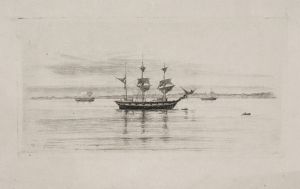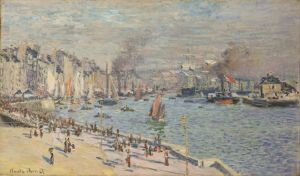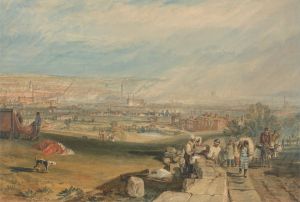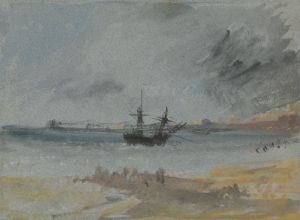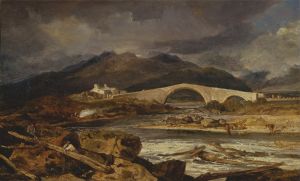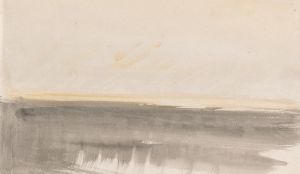
Boats Carrying Out Anchors to the Dutch Men of War
A hand-painted replica of Joseph Mallord William Turner’s masterpiece Boats Carrying Out Anchors to the Dutch Men of War, meticulously crafted by professional artists to capture the true essence of the original. Each piece is created with museum-quality canvas and rare mineral pigments, carefully painted by experienced artists with delicate brushstrokes and rich, layered colors to perfectly recreate the texture of the original artwork. Unlike machine-printed reproductions, this hand-painted version brings the painting to life, infused with the artist’s emotions and skill in every stroke. Whether for personal collection or home decoration, it instantly elevates the artistic atmosphere of any space.
"Boats Carrying Out Anchors to the Dutch Men of War" is an oil painting by the renowned British artist Joseph Mallord William Turner (1775–1851). Turner, often regarded as one of the greatest landscape painters in Western art, was known for his innovative use of light, color, and atmosphere. This particular work is believed to have been completed in 1801 and is an example of Turner’s early marine paintings, which often depicted historical or nautical themes.
The painting illustrates a maritime scene involving Dutch ships of war, with smaller boats carrying out anchors to assist the larger vessels. The composition captures the dynamic activity of the harbor, with a focus on the interplay between human labor and the natural environment. Turner’s attention to detail in the depiction of the ships and the water demonstrates his deep understanding of maritime subjects, which he developed through extensive study and observation.
This work reflects Turner’s interest in historical naval events and his admiration for Dutch maritime art. Dutch Golden Age painters, such as Willem van de Velde the Younger, were significant influences on Turner’s early career. The painting’s subject matter may reference the naval power of the Dutch Republic during the 17th century, though the specific historical context of the scene is not explicitly documented.
Turner’s mastery of light and atmosphere is evident in this painting, as he skillfully conveys the effects of weather and water. The use of a muted color palette and subtle tonal gradations creates a sense of depth and movement, drawing the viewer into the scene. This approach foreshadows the more experimental techniques Turner would later employ in his career, particularly in his exploration of light and abstraction.
"Boats Carrying Out Anchors to the Dutch Men of War" is currently housed in the Tate collection in London, where it is part of the Turner Bequest. This bequest, made after Turner’s death in 1851, included a vast number of his works, ensuring their preservation and public accessibility. The painting is considered an important example of Turner’s early marine art and provides insight into his development as an artist.
As with many of Turner’s works, this painting demonstrates his ability to blend technical precision with a poetic sensibility, capturing both the physical and emotional essence of the scene. It remains a testament to Turner’s enduring legacy as a pioneer of Romanticism and a master of landscape and seascape painting.







